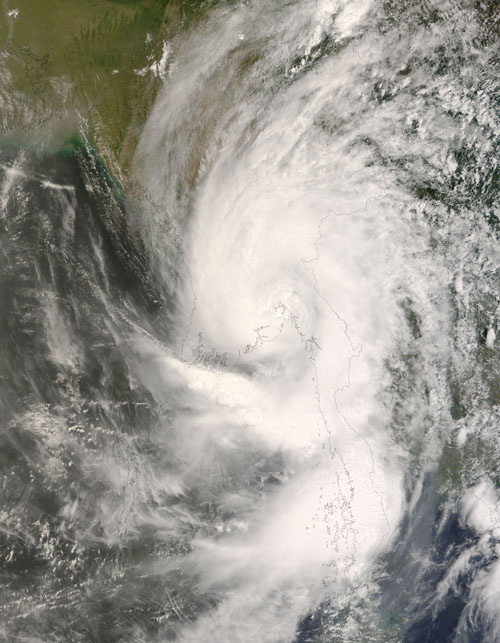The historical storms featured in this interactive are some of the deadliest and costliest tropical cyclones that have occurred globally from the pre-1900’s to present day. The summaries include a description of each tropical cyclone’s life cycle, impacts caused upon landfall, and other interesting facts. View the featured storms by choosing a decade from the menu on the left. The deadliest tropical cyclone in world history is the Great Bhola Cyclone, which struck Bangladesh in 1970 and caused approximately 500,000 fatalities. More recently, Cyclone Nargis, which made landfall in Myanmar in 2008, caused catastrophic destruction and at least 138,000 fatalities. The Galveston Hurricane of 1900 was responsible for over 6,000 deaths and still remains to be the deadliest hurricane to strike the United States. As many of the Atlantic hurricanes featured here have caused extensive devastation, their names have been retired, never to be used again by the National Hurricane Center. Many of the featured storms have left important marks on regional and global history. The Great Bhola Hurricane is actually linked to the creation of the state of Bangledesh, and the Hakata Bay Typhoon wiped out the Mongol fleet during their second and final attempt at invading Japan in 1281. In 1609, a fleet of ships carrying settlers from England to Virginia was struck by a hurricane and some of these settlers became Bermuda's first inhabitants as they found refuge on the island after the storm (their stories also helped inspire Shakespeare's The Tempest). An average of about 2 major hurricanes every 3 years made landfall somewhere along the U.S. Gulf or Atlantic coast. 2005 set the record for the most U.S. major hurricane strikes since 1851 and tied for second-most hurricane strikes. When looking at historical storms that have occurred in the Atlantic ocean basin from 1851 to 2006: one-third of the deadliest hurricanes were category four or higher, and fourteen out of the fifteen deadliest hurricanes were category 3 or higher. Also, large death totals were primarily a result of storm surge (10 ft or greater) associated with many of these major hurricanes, and a large portion of the damage in four of the twenty costliest tropical cyclones resulted from inland floods caused by torrential rain. |


